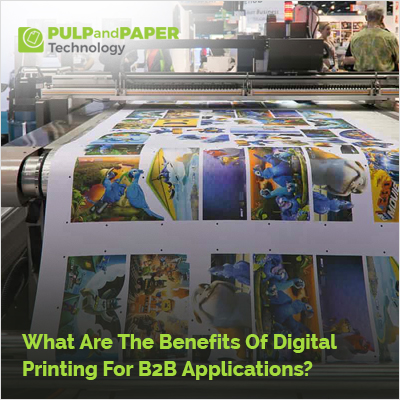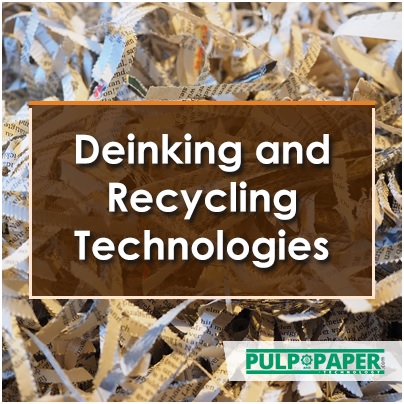What Are The Benefits Of Digital Printing For B2B Applications?

Digital printing has revolutionized the landscape of B2B applications, offering businesses unparalleled flexibility, cost-effectiveness for short runs, and the ability to personalize printed materials. With short turnaround times, high-quality results, and the option for variable data printing, digital printing provides a dynamic solution for on-demand, customized, and environmentally conscious B2B (business-to-business) marketing and communication needs.
Digital printing offers several benefits for B2B applications, providing companies with greater flexibility, efficiency, and customization. Here are some of the key advantages:
1. Short Turnaround Times: The short turnaround times in digital printing are a result of the technology's inherent advantages over traditional printing methods. Unlike offset printing, which involves complex setup processes like plate creation and drying times, digital printing operates without these time-consuming steps.
In digital printing, the process is streamlined and eliminates the need for extensive preparation. The digital file containing the design is sent directly to the printer, allowing for rapid setup and production. This agility is particularly valuable in B2B applications where businesses often require printed materials promptly, whether for time-sensitive marketing campaigns, product launches, or events. The ability to swiftly produce materials like marketing collateral or promotional items means that businesses can respond promptly to market trends, changing circumstances, or last-minute adjustments in their strategies. This responsiveness is a key advantage, ensuring that B2B companies can meet tight deadlines, capitalize on opportunities, and maintain a competitive edge in dynamic business environments. Additionally, it enables more efficient supply chain management by reducing the time between order placement and delivery, contributing to overall operational efficiency for B2B clients.
| Read More: Print Precision: Optimizing Printing Lines for Efficiency and Quality |
2. Cost-Effective for Short Runs: The cost-effectiveness of digital printing for short runs stems from its ability to eliminate many of the setup expenses associated with traditional printing processes. Traditional methods, such as offset printing, often require the creation of printing plates, a meticulous setup process, and additional time-consuming steps.
In contrast, digital printing doesn't necessitate these elaborate setup procedures. The digital file containing the design is directly transferred to the printer, eliminating the need for plate production and related expenses. This streamlined approach significantly reduces initial costs and makes digital printing particularly economical for short print runs. For B2B applications, this cost-effective nature is advantageous when businesses require smaller quantities of printed materials, such as brochures, flyers, or promotional items. Instead of having to commit to large print volumes to justify setup costs, B2B companies can order the precise quantity they need. This not only minimizes expenses but also reduces the potential for excess inventory and waste, aligning with efficient and sustainable business practices.
Moreover, the cost-effectiveness of digital printing allows B2B clients to engage in targeted marketing initiatives without breaking the bank. They can tailor their printed materials to specific audiences, industries, or events without the financial burden associated with traditional printing methods. This flexibility in quantity and cost makes digital printing an attractive and pragmatic choice for B2B businesses seeking efficient and budget-conscious solutions for their printing needs.
3. Variable Data Printing (VDP): Variable Data Printing (VDP) is a transformative feature within the realm of digital printing, providing B2B businesses with a powerful tool to individualize their communication strategies. This capability allows companies to personalize printed materials at an unprecedented level, incorporating recipient-specific details such as names, job titles, and company information. By infusing this personalized touch, B2B companies can create more engaging and relevant communication, establishing a deeper connection with their target audience.
In the realm of B2B marketing, Variable Data Printing (VDP) is a pivotal tool for executing precise targeted campaigns. This technology enables content customization based on specific criteria like industry, location, or past interactions, enhancing the relevance of printed materials and captivating diverse audience segments. Customizing messaging to individual needs not only improves engagement but also amplifies response rates, ultimately raising the chances of converting leads into valued customers.
Additionally, VDP streamlines the seamless incorporation of exclusive promotional codes, special offers, or personalized discounts into printed materials. This strategic application of variable data encourages B2B clients to engage in specific actions, whether it involves making a purchase, attending an event, or participating in a promotional campaign. As a result, it plays a pivotal role in significantly enhancing the overall success of marketing initiatives
The personalized approach afforded by VDP extends beyond immediate marketing gains to positively influence brand perception. B2B clients are likely to appreciate the attention to detail and commitment to individualized customer experiences, fostering a more favorable view of the brand and strengthening the overall relationship between the business and its clientele.
Efficiency is a hallmark of VDP, particularly when managed through automated processes in digital printing. This ensures accuracy and consistency across a large number of personalized prints, making it an indispensable tool for B2B companies engaged in extensive and targeted marketing campaigns. In summary, Variable Data Printing in digital printing empowers B2B businesses to elevate their marketing materials, fostering stronger connections and relationships through highly personalized and precisely targeted communication strategies.
4. On-Demand Printing: On-demand printing emerges as a strategic advantage for B2B businesses, presenting a departure from traditional printing practices by offering flexibility, cost savings, and efficiency. By embracing on-demand printing, B2B enterprises can tailor their approach to printing materials precisely when needed, yielding several noteworthy benefits.
One of the primary advantages is the elimination of the requirement for large inventories of printed materials. Traditional printing often necessitates bulk orders to justify setup costs, resulting in excess stock that can tie up capital and storage space. On-demand printing allows B2B businesses to print only what is immediately required, preventing overproduction and minimizing storage costs associated with maintaining surplus inventory. Moreover, on-demand printing contributes to a significant reduction in waste. Traditional printing practices can lead to outdated or unused materials due to changes in market conditions, product offerings, or branding strategies. With on-demand printing, B2B companies can adapt swiftly to evolving requirements, ensuring that printed content remains relevant. This not only aligns with sustainable business practices but also minimizes environmental impact.
The ability to make quick updates or changes to printed content is another key benefit of on-demand printing. In dynamic business environments, where information can change rapidly, B2B enterprises need the agility to modify marketing collateral, product information, or branding materials without being burdened by existing stock. On-demand printing allows for real-time adjustments, ensuring that printed materials are always current and reflective of the latest business developments.
Furthermore, on-demand printing proves instrumental in scenarios where B2B businesses require customized materials for specific events, client meetings, or trade shows. This ensures that promotional materials are not only up-to-date but also tailored to the specific context, enhancing the impact and relevance of the printed content.
On-demand printing provides B2B businesses with a flexible and efficient solution for their printing requirements. This approach eliminates the necessity for large inventories, reduces waste, and allows for swift updates. Aligned with principles of flexibility, cost-effectiveness, and sustainability, on-demand printing serves as a valuable asset for businesses looking to optimize their printing processes.
5. High-Quality Printing: Advancements in digital printing technology have ushered in a new era of high-quality printing, positioning it as a formidable competitor to traditional offset printing. B2B clients can now reap the benefits of superior print quality, marked by vibrant colors, sharp images, and consistent results across print runs.
One of the key strengths of modern digital printing is its ability to reproduce vivid and accurate colors. The color precision achieved in digital printing allows B2B businesses to maintain brand consistency and ensure that their marketing materials, such as brochures, catalogs, and promotional items, reflect the intended visual identity. This is particularly crucial in establishing a professional and cohesive brand image.
The clarity and sharpness of images produced by digital printing are noteworthy, contributing to the overall visual appeal of printed materials. Whether showcasing product images, graphics, or intricate details, digital printing technology excels in capturing and reproducing fine elements with precision. This ensures that B2B clients can present their products or services in the best possible light, enhancing the effectiveness of their marketing efforts.
Consistency across print runs is another advantage of high-quality digital printing. Unlike traditional methods that may experience variations in color or print quality from one run to another, digital printing offers reliability and uniformity. B2B clients can confidently reproduce the same high-quality results, whether printing a small batch or a larger volume, ensuring a standardized and professional appearance for their materials.
The improved print quality extends to various print substrates, allowing B2B businesses to explore a wide range of materials for their marketing collateral. Whether printing on paper, cardstock, synthetic materials, or specialty substrates, digital printing technology adapts seamlessly, maintaining its high standards and delivering exceptional results.
Advancements in digital printing technology have elevated the quality of printed materials for B2B clients. The vibrant colors, sharp images, and consistent results across print runs contribute to a professional and visually appealing representation of a business's brand and offerings. As a result, high-quality digital printing has become a preferred choice for B2B applications, providing a reliable and visually impactful solution for diverse printing needs.
6. Customization and Personalization: Digital printing's capacity for high-level customization and personalization stands as a pivotal advantage for B2B companies seeking targeted and impactful marketing strategies. This flexibility empowers businesses to tailor their printed materials with a precision that resonates with specific audiences, industries, or events, thereby enhancing the overall effectiveness of their marketing efforts.
One key aspect of customization lies in the ability to adapt content to different target audiences. B2B companies can create variations of their printed materials, adjusting messaging, imagery, and design elements to better connect with diverse client segments. This targeted approach ensures that each audience receives content that is not only relevant to their needs but also speaks directly to their preferences and challenges.
Industries often have unique characteristics and requirements. Digital printing enables B2B businesses to customize materials according to industry-specific nuances, ensuring that the printed content aligns with the expectations and standards of a particular sector. This industry-specific tailoring can enhance the credibility of marketing materials and establish a stronger connection with clients in specialized fields.
Furthermore, personalization at an individual level is a notable strength of digital printing. B2B companies can incorporate variable data printing (VDP) to include personalized information, such as the recipient's name, company details, or specific preferences. This level of personalization creates a more engaging and memorable experience for the recipient, reinforcing the relationship between the business and its clients.
The adaptability of digital printing has also proven invaluable for creating materials tailored to specific events or promotional campaigns. Whether it's customizing materials for a trade show, product launch, or seasonal promotion, digital printing allows B2B businesses to swiftly adjust content, design, and branding elements to match the context of the event. This agility ensures that marketing materials are always aligned with the latest business strategies and market dynamics.
The high degree of customization and personalization offered by digital printing empowers B2B companies to create targeted and impactful marketing materials. Whether tailoring content for different audiences, industries, or events, the flexibility of digital printing enhances the relevance and effectiveness of printed materials, contributing to a more engaging and personalized communication strategy.
7. Variable Print Data and A/B Testing: B2B marketers are leveraging the capabilities of variable data printing (VDP) in digital printing to conduct A/B testing, a data-driven methodology aimed at refining and optimizing marketing campaigns. With VDP, businesses can experiment with different versions of printed materials, systematically testing various elements such as messaging, design, and promotional offers. This approach allows marketers to glean valuable insights into audience preferences and behavior, leading to the optimization of communication strategies.
By testing different messages, design variations, and promotional offers, B2B companies can identify the most effective components, ensuring that their printed materials resonate more profoundly with the target audience. Additionally, variable data printing facilitates audience segmentation, enabling the creation of personalized materials for distinct audience segments. The integration of response tracking further enhances the A/B testing process, providing measurable data on engagement, conversions, and other metrics. This iterative and data-driven feedback loop empowers B2B marketers to continuously refine and enhance their printed materials, ultimately optimizing the overall effectiveness of their marketing campaigns.
8. Flexibility in Design Changes: Digital printing offers B2B businesses a notable advantage in the form of flexibility, particularly when it comes to accommodating last-minute design changes. Unlike traditional printing methods, which involve extensive modifications to designs, it a crucial asset for businesses that need to adapt rapidly to changing circumstances. Setup processes and fixed printing plates, digital printing allows for quick and seamless modifications to designs, making it a crucial asset for businesses that need to adapt rapidly to changing circumstances.
The inherent flexibility of digital printing is particularly valuable for B2B companies operating in dynamic markets. In response to evolving market trends, product updates, or other external factors, businesses can make real-time adjustments to their marketing materials without the constraints of set plate designs. This agility ensures that printed content remains current, relevant, and aligned with the latest developments, contributing to the overall responsiveness of the marketing strategy. The ability to implement last-minute design changes is especially important for time-sensitive campaigns or product launches. B2B businesses can capitalize on emerging opportunities or address unforeseen challenges promptly by modifying the design elements of their printed materials without the delays associated with traditional printing methods.
Moreover, this flexibility extends to smaller print runs, allowing B2B companies to produce only the quantity needed for immediate requirements. This not only reduces costs associated with excess inventory but also aligns with a more sustainable and resource-efficient approach to printing. The flexibility in design changes offered by digital printing empowers B2B businesses to stay agile in response to market dynamics. The ability to make swift modifications to marketing materials ensures that printed content remains adaptable and effective, making digital printing a valuable tool for businesses navigating fast-paced and ever-changing business environments.
9. Reduced Waste: Digital printing plays a pivotal role in advancing sustainability objectives, particularly in response to the concerns of environmentally conscious B2B clients. This substantial waste reduction is primarily facilitated by the capacity to print on-demand and in smaller quantities, a departure from traditional printing practices that frequently result in excessive production. Unlike conventional methods that necessitate large print runs to justify setup costs, digital printing allows B2B businesses to produce only the exact quantity required at any given time. This tailored approach minimizes surplus inventory, addressing a common source of waste in traditional printing and emphasizing a more resource-efficient and eco-friendly printing solution.
Digital printing plays a pivotal role in advancing sustainability goals, particularly by addressing the concerns of environmentally conscious B2B clients through substantial waste reduction. This positive environmental impact is primarily realized through the capability to print on-demand and in smaller quantities, marking a departure from traditional printing practices that frequently result in overproduction. Unlike conventional printing methods that necessitate large print runs to justify setup costs, digital printing allows B2B businesses to produce only the precise quantity needed at any given time. This tailored approach eliminates the generation of surplus inventory, a common source of waste in traditional printing, and ensures that materials are created in direct response to current demand.
The on-demand feature of digital printing not only mitigates overordering but also facilitates a dynamic and adaptive approach. B2B clients can easily adjust their printing requirements, accommodating changes in market trends, product updates, or unforeseen shifts in business strategies. This flexibility reduces the likelihood of outdated or unused inventory, further contributing to the reduction of waste. For environmentally-conscious B2B clients, the waste reduction achieved through digital printing aligns with sustainable business practices, demonstrating a commitment to responsible resource management. The emphasis on on-demand production and smaller print quantities not only optimizes resource utilization but also reflects a broader dedication to minimizing the overall environmental impact of printing processes.
In essence, digital printing's role in waste reduction positions it as a sustainable and eco-friendly choice for B2B clients who prioritize environmental considerations in their business operations.
Additionally, the reduced waste in digital printing extends beyond inventory management. The ability to accommodate last-minute design changes without the constraints of fixed printing plates ensures that businesses can adapt their printed materials quickly, reducing the likelihood of outdated or unusable inventory. For environmentally conscious B2B clients, the commitment to waste reduction through digital printing aligns with broader sustainability initiatives. It showcases a responsible approach to resource management and underscores the business's dedication to minimizing its environmental impact.
The reduced waste associated with digital printing, driven by on-demand production and smaller print quantities, positions it as an eco-friendly choice for B2B clients. This aligns with sustainability goals, making digital printing an attractive option for businesses seeking environmentally conscious solutions for their printing needs.
Conclusion:
In conclusion, digital printing emerges as a strategic asset for B2B businesses, offering enhanced agility, cost-effectiveness for shorter production cycles, personalized marketing capabilities, and rapid adaptability to evolving business requirements. The combination of these advantages positions digital printing as a valuable and versatile choice across various B2B applications, spanning from marketing collateral to packaging and promotional items. This technology not only optimizes efficiency but also empowers businesses to tailor their approach to printing, meeting the dynamic demands of the modern business landscape.







